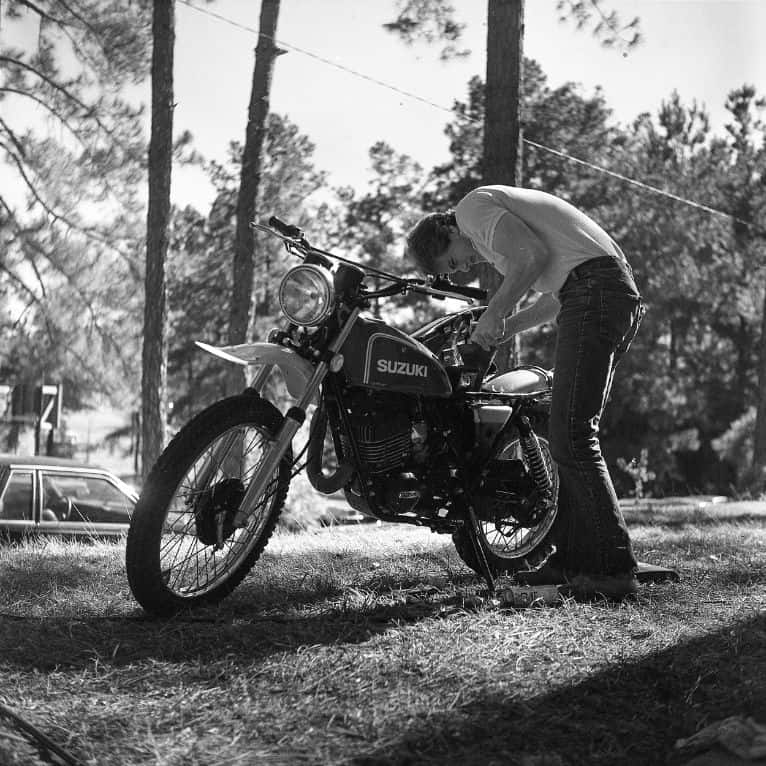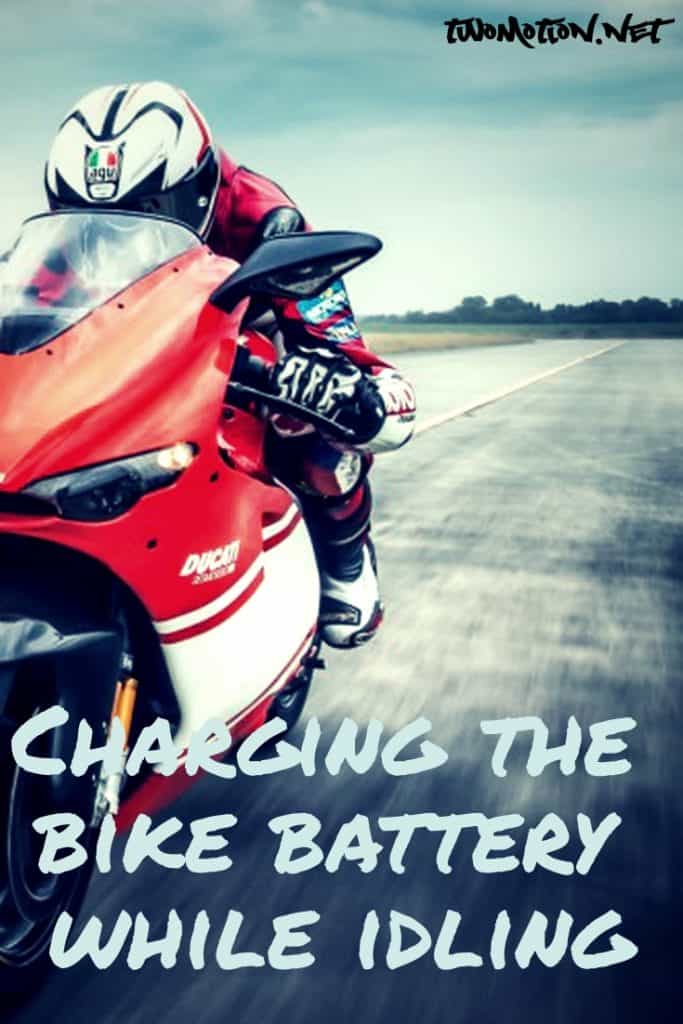Motorcycles charge the battery while the engine is idling, and the recharge time depends on what state the battery is in, but a good battery should take 12 -18 min. The alternator and the regulator still run while the motorcycle is in neutral. A bike usually has its regulator remotely attached somewhere on the frame separate from the alternator, whereas a car would often have the regulator built into the alternator.
Overview
In this helpful how-to guide, we will look at a few things you might want to do after realising your bike has a flat battery; getting your bike to start, diagnosing the problem and what to do about it.
We will discuss the following:
- Getting the bike to start
- How long to recharge?
- Finding and fixing the problem
Getting the bike to start
Today motorcycles rarely have a kick-start except for dirt-bikes, and some specific bike manufactures that like to keep to the old-school ways. In a way, I like kicking a bike over; it’s like I really made the bike do that!
Some days I wish my bike had a kick-start whenever I have a flat battery. You know that feeling you get when you want to go riding but then Bam!…Or rather, NO Bam! The battery is dead.
So let’s have a look at what we need to do to get the bike going.
The easiest way to start your bike is to use some jumper-cables; connecting them to another vehicle (positive on positive and negative on negative).
Have the other vehicle running for a minute or two before trying to start your bike. Your bike should start from the first try or at least turnover faster than what it did before.
If nothing happens, your battery might not be the problem, though you should make sure that the cables are working and that you connected them properly.
If the engine makes a metal “click” sound, then your starter might be jammed, or the battery is entirely out of juice. Try idling the other vehicle at a higher rpm for maybe five minutes. If your bike still doesn’t turn over, try the next step.
If the above method doesn’t work or you don’t have jumper cables, you could try to run-start your bike. This involves running to start the bike. If you are on a hilltop, you might only have one chance at this, so make sure you have everything ready.
Before you do the run-start, make sure you have the ignition switch turned on, the kill-switch set to run and the kickstand lifted.
Now you will need to put your bike in a higher gear while holding in the clutch, probably 3rd gear for most motorcycles (You want some torque to turn the engine over).
To reduce the risk of dropping your bike, have someone push the bike while you are on it; this will make it easier for you to control. When you have reached a good speed, release the clutch and open the throttle.
Once you hear the engine getting some life into it, pull in the clutch again while still applying throttle. Once you get a good rev out of the engine, you can release the throttle.
How long to recharge?
If your battery and other parts are working correctly, your battery should be charged in 12 – 18 minutes (for a 3Ah battery with an alternator that puts out 13Amp = 25Amp minus headlights and overall wiring) when idling.
If the battery takes longer to recharge, it could be a sign that the battery needs to be replaced. If the battery hasn’t recharged at all, then there might be another problem.
There is a great tool to calculate exactly the time it should take. You can click the link to electricscooterparts.com to use it.
Finding and fixing the problem
You will need to consider many things when diagnosing the problem.
If your bike has been doing this for some time and it has just gotten worse, it should be a sign that the battery has gotten old and needs to be replaced.
Be sure to have the battery tested before you buy a new one. Replacing the battery should be an easy task for anyone. The battery is usually located under the seat and would require you to remove it to access it.
If the situation is entirely new, it might signal that there is a problem with the alternator/stator or the regulator.
If your motorcycle only does this occasionally without it not running for a long time, then you may need to look at the starter motor (it could need servicing from an auto electric workshop).
If this has only happened once and not again, the starter motor might have just stopped on a funny point and wasn’t able to turn over. You might have drained the battery while trying to start it.
I have seen people working on cars that just place a plank on the starter and then hammering it with something hefty to get the motor out of that funny position. I don’t know if that would work, but it might be worth a try.
If your motorcycle only does this after not running for a while, you may have a problem with your wiring. It would be best to check all the prominent places for damages where the wiring might be moving against the frame.
Believe me; you don’t want to replace all of the wirings unless it is really necessary.
Final words
There are many reasons why a battery might run flat or not recharge, but the best way to find the problem is by doing the necessary tests first, and if you feel that you may not have the appropriate experience, I suggest trying anyway.
The best way to learn is by making mistakes and doing the wrong things that lead to more experience in other problems that might occur in the future. You may also like another post: I dropped my bike – why is it leaking?
I always try to keep my articles interesting and informative. And I’m always thankful when they are shared on social media platforms or Pinterest.


